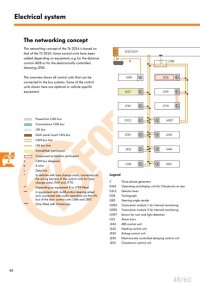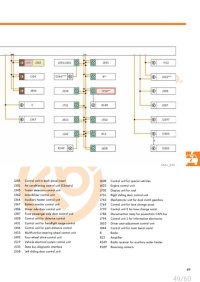I'm looking for some help in understanding if the following is possible.
MIB2 Head Unit - Hidden Sound Settings
The MIB2 (second-generation modular infotainment platform) head units (Discover Media) appear to have hidden, additional filters and EQ that we can not change without coding. This includes boosts to low and high that vary with volume, a high pass filter, other banded EQs. This is not the same as the user editable low/mid/high EQ.
For more info on see VW Discover Pro flat output?
I've fitted aftermarket speakers and an amp in my T6, and I'm about to add a sub. At some point I may replace the head unit, but will by stock OEM Discover Media for the foreseeable. Ideally I would like the OEM head unit to run a flatter output, without a high pass etc.
Modifying the MIB2 5F Sound Settings
The sound profile data for a MIB2 unit appears to be held in a 5F Infotainment System address.
Research of MIB2 Sound Datasets
If you can read this data out you can then load it into an editor such as 010 with these templates. And then write it back in to update the unit.
There are examples of people successfully removing the EQs etc through OBD / coding:
- VW Discover Pro flat output?
How can you do it?
You can use OBIS or Vag Com Pro to read/write the data. I have neither of these.
There are examples of people achieving this through 5F coding using a cheap ELM327 adaptor using the Car Scanner app. See Enabling *** & subwoofer control without VCP - FL success
I have the full Car Scanner app and a Carista adaptor. The app does not fully support the T6 platform (PQ?) at this time. I have been able to unlock developer mode, and also read a couple of 5F addresses but get an error when trying to read 0x003000 and 0x003B00.
What Next?
Has anyone done this already?
Is anyone able to read the 5F 0x003000 and 5F 0x003B00 addresses? How have you done this?
If you can read them and share the values I'd like to run them through the 010 editor templates to see if the data makes sense.
MIB2 Head Unit - Hidden Sound Settings
The MIB2 (second-generation modular infotainment platform) head units (Discover Media) appear to have hidden, additional filters and EQ that we can not change without coding. This includes boosts to low and high that vary with volume, a high pass filter, other banded EQs. This is not the same as the user editable low/mid/high EQ.
For more info on see VW Discover Pro flat output?
I've fitted aftermarket speakers and an amp in my T6, and I'm about to add a sub. At some point I may replace the head unit, but will by stock OEM Discover Media for the foreseeable. Ideally I would like the OEM head unit to run a flatter output, without a high pass etc.
Modifying the MIB2 5F Sound Settings
The sound profile data for a MIB2 unit appears to be held in a 5F Infotainment System address.
Research of MIB2 Sound Datasets
If you can read this data out you can then load it into an editor such as 010 with these templates. And then write it back in to update the unit.
There are examples of people successfully removing the EQs etc through OBD / coding:
- VW Discover Pro flat output?
How can you do it?
You can use OBIS or Vag Com Pro to read/write the data. I have neither of these.
There are examples of people achieving this through 5F coding using a cheap ELM327 adaptor using the Car Scanner app. See Enabling *** & subwoofer control without VCP - FL success
I have the full Car Scanner app and a Carista adaptor. The app does not fully support the T6 platform (PQ?) at this time. I have been able to unlock developer mode, and also read a couple of 5F addresses but get an error when trying to read 0x003000 and 0x003B00.
What Next?
Has anyone done this already?
Is anyone able to read the 5F 0x003000 and 5F 0x003B00 addresses? How have you done this?
If you can read them and share the values I'd like to run them through the 010 editor templates to see if the data makes sense.



